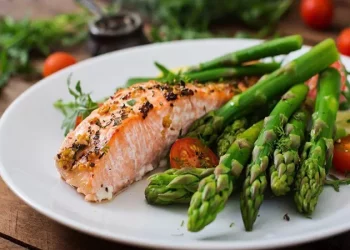For individuals managing diabetes, nutrition is more than just a routine—it’s a cornerstone of health and quality of life. Among the many dietary components essential for managing blood glucose levels, dietary fiber stands out as particularly vital. While it often receives less attention than carbohydrates or sugars, fiber plays a significant role in moderating blood sugar spikes, improving insulin sensitivity, and supporting long-term glycemic control.
This article explores the best fiber-rich foods for diabetics, the types of fiber, how they impact diabetes management, and how to safely incorporate them into a daily eating pattern.
What Is Fiber and Why Is It Important for Diabetics?
Dietary fiber is the part of plant-based foods that the body cannot digest. Unlike fats, proteins, or carbohydrates that are broken down and absorbed, fiber passes relatively intact through the stomach, small intestine, and colon.
There are two main types of fiber:
Soluble Fiber: This type dissolves in water to form a gel-like substance. It can help lower blood glucose and cholesterol levels.
Insoluble Fiber: This type does not dissolve in water and helps with bowel regularity and digestive health.
Both types are essential, but for diabetics, soluble fiber plays a particularly critical role in slowing glucose absorption, helping avoid post-meal blood sugar spikes.
According to the American Diabetes Association, most adults should aim for 25 to 30 grams of total dietary fiber daily, ideally from whole food sources.
How Fiber Helps Manage Diabetes
The advantages of fiber go beyond simply feeling full. Here are key ways in which fiber supports blood sugar control:
1. Reduces Glycemic Load
High-fiber foods generally have a lower glycemic index (GI), which means they raise blood sugar more slowly than low-fiber counterparts. This slower absorption rate reduces the likelihood of glucose surges and dips.
2. Improves Insulin Sensitivity
Regular fiber intake has been shown to improve how cells respond to insulin, thereby lowering insulin resistance over time—an essential benefit for people with type 2 diabetes.
3. Supports Healthy Weight
High-fiber foods tend to be more filling and lower in calories, promoting satiety. This helps with weight management, which is crucial in controlling and even reversing type 2 diabetes in some individuals.
4. Lowers Cholesterol
Soluble fiber helps reduce levels of LDL (“bad”) cholesterol. Since people with diabetes are at increased risk for cardiovascular disease, this is another vital advantage.
5. Improves Gut Health
Fiber supports the growth of healthy gut bacteria, contributing to better digestion and potential anti-inflammatory effects, which are beneficial for metabolic health.
Top Fiber-Rich Foods for Diabetics
Below is a breakdown of the most beneficial fiber foods for people with diabetes, grouped into categories to aid meal planning.
1. Legumes: Beans, Lentils, and Peas
Legumes are a powerhouse of both soluble and insoluble fiber, as well as plant-based protein. They are low on the glycemic index and offer slow-digesting carbohydrates.
Examples:
Lentils: One cup of cooked lentils provides about 15.6 grams of fiber.
Chickpeas: Also known as garbanzo beans, one cup cooked gives around 12.5 grams.
Black beans: About 15 grams per cup cooked.
Green peas: One cup has about 8.8 grams.
Why they’re good: Legumes provide a steady release of glucose and promote satiety. They can be added to salads, soups, or blended into spreads like hummus.
2. Whole Grains
Unlike refined grains, whole grains retain their fiber-rich bran and germ. They not only regulate glucose absorption but also offer essential nutrients.
Best Options:
Steel-cut oats: 4 to 5 grams of fiber per 1/2 cup cooked. Choose unsweetened, unflavored types.
Barley: Rich in beta-glucan, a type of soluble fiber shown to improve glycemic control.
Quinoa: Provides about 5 grams of fiber per cup and is also high in protein.
Brown rice: Offers moderate fiber content but is preferable over white rice.
Why they’re good: Whole grains provide slow-burning fuel, which is especially beneficial for type 2 diabetics.
3. Vegetables: Non-Starchy, High-Fiber Options
Vegetables should form the bulk of any diabetic’s plate. Non-starchy types are especially beneficial, as they are low in calories and carbs but rich in fiber.Top Picks:
Broccoli: About 5 grams per cup cooked.
Brussels sprouts: Nearly 4 grams per 1/2 cup cooked.
Carrots: Around 3.6 grams per cup raw.
Artichokes: A medium artichoke contains over 10 grams of fiber.
Spinach and kale: Though lighter on fiber per serving, they are nutrient-dense and can be eaten in volume.
Why they’re good: These vegetables can be consumed in generous amounts and help stabilize blood glucose while offering antioxidants and vitamins.
4. Fruits: Whole, Fresh, and Fiber-Packed
Fruit can be a tricky area for diabetics due to natural sugar content. However, when eaten whole, certain fruits provide fiber that mitigates sugar absorption.
Fiber-Rich Choices:
Apples: One medium apple has about 4.4 grams of fiber.
Pears: Particularly high—one medium pear contains about 5.5 grams.
Berries (raspberries, blackberries): One cup of raspberries contains 8 grams.
Avocados: Though technically a fruit, they are extremely fiber-rich, with up to 10 grams per fruit.
Figs and guavas: Lesser-known but packed with fiber.
Why they’re good: Avoid fruit juices; they lack fiber and cause rapid glucose spikes. Whole fruits, especially with skins, are ideal.
5. Nuts and Seeds
These compact sources of nutrients offer both fiber and healthy fats, which together promote glucose stability and cardiovascular protection.
Ideal Options:
Chia seeds: One tablespoon offers about 5 grams of fiber.
Flaxseeds: Provide both soluble fiber and omega-3 fatty acids.
Almonds: 3.5 grams per ounce.
Pistachios: 2.9 grams per ounce.
Psyllium husk: Used as a fiber supplement and often included in diabetic meal plans.
Why they’re good: Great as snacks or meal toppers, they help control hunger and stabilize sugar levels.
6. Root Vegetables and Tubers (In Moderation)
Certain root vegetables are fiber-rich, though higher in carbs. When eaten in controlled portions, they can fit into a diabetic diet.
Good Options:
Sweet potatoes: One medium baked with skin has around 4 grams of fiber.
Turnips and rutabaga: Lower in carbs than potatoes and rich in fiber.
Beets: Also contain antioxidants like betalains, with about 3.8 grams per cup.
Why they’re good: Opt for roasted or steamed preparations to retain fiber and avoid added sugars.
7. High-Fiber Snacks and Add-ons
Some pantry staples can help meet fiber goals without major changes to your main meals.
Smart Choices:
Popcorn: Air-popped and unsalted, 3 cups = about 3.6 grams.
Bran cereals: Check labels—look for 5g+ fiber per serving and low added sugar.
Whole grain wraps: Choose those with at least 5 grams of fiber per wrap.
Fiber-fortified snack bars: Read labels carefully—choose those made with real fiber (like chicory root or oats) rather than artificial additives.
Meal Planning: How to Incorporate More Fiber Without Digestive Discomfort
For individuals unused to high-fiber diets, sudden increases can cause bloating, gas, or cramping. Gradual introduction is key.
Tips for Success:
Start slowly: Add one high-fiber food at a time and increase portion sizes over a few weeks.
Drink water: Fiber absorbs water. Drinking adequate fluids helps avoid constipation.
Balance fiber types: Aim for a mix of soluble and insoluble fibers throughout the day.
Read labels: Especially on packaged foods. Opt for those where fiber per serving is at least 3 grams and added sugars are under 5 grams.
Pair with protein: For optimal glycemic control, combine high-fiber foods with lean proteins or healthy fats.
Sample Daily Fiber Plan for a Diabetic (Approx. 30g Fiber)
Breakfast: Steel-cut oats with chia seeds, a handful of berries (10g)
Snack: Apple with a tablespoon of almond butter (5g)
Lunch: Lentil and vegetable soup with a side of whole grain toast (9g)
Dinner: Grilled chicken with steamed broccoli and quinoa (6g)
Common Pitfalls to Avoid
Relying on Supplements Alone: Fiber pills or powders lack the nutritional complexity of whole foods.
Choosing Refined “Whole Grain” Products: Not all products labeled as whole grain are rich in fiber. Always check the nutrition panel.
Overdoing High-GI Fruits: Even with fiber, fruits like bananas and grapes can spike blood sugar if not portioned mindfully.
Conclusion:
In the landscape of diabetic nutrition, fiber stands tall as a powerful, underutilized ally. It works behind the scenes—slowing digestion, improving insulin response, lowering cholesterol, and supporting a healthy gut—all without causing blood sugar chaos. By emphasizing fiber-rich whole foods such as legumes, vegetables, whole grains, fruits, nuts, and seeds, diabetics can gain better control over their glucose levels and reduce their risk of long-term complications.
Ultimately, fiber is not a dietary afterthought—it’s a cornerstone of sustainable diabetic health. Whether you’re newly diagnosed or looking to refine your nutrition, starting with fiber is one of the smartest choices you can make.
Related topics:
What is a Good Diet for Someone Who is Prediabetic?


























